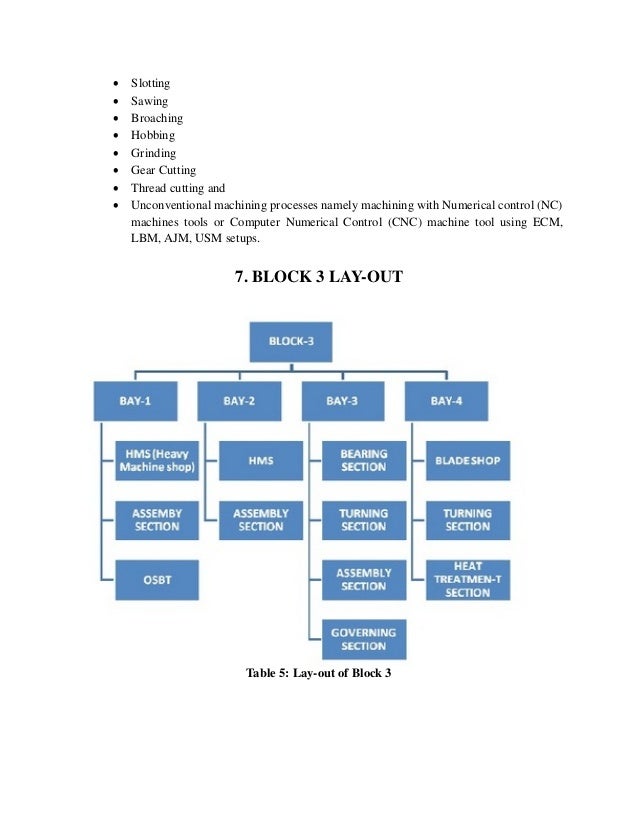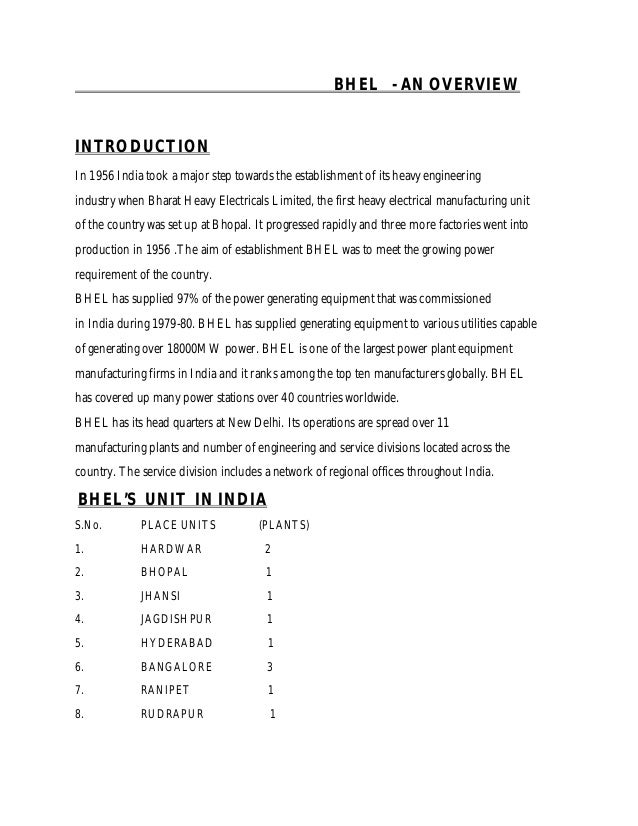Bhel Haridwar Training Report Block 3 Pdf
SEARCH HOW-TO VIDEOS » Register My Portege » Check My Warranty Coverage ». Manuals & Specs; Knowledge Base; Drivers & Updates. Sata raid drivers windows 7. Toshiba Support. All Toshiba Results». How to install Windows XP or Windows 2000 on Toshiba computers that use a Serial ATA hard drive controller. Jun 26, 2009 - The Official Toshiba Support Website provides support for $MODEL_NAME$. BTW I'm sure somebody will recommend Plan "C": Nuke the RAID volumes on the ICH10R and use Windows RAID with the old SATA drivers.
Bharat Heavy Electricals Ltd.(BHEL) Haridwar has two manufacturing plants:- not avl, Heavy Electricals Equipment Plant. The Heavy Electricals Equipment Plant is one of the major manufacturing units of BHEL. Cara hack kartu kredit orang untuk belanja online. The core business. Vocational Training Report Turbine Blade Shop-Block 3 Bharat Heavy Electricals Limited Ranipur,Haridwar (Uttrakhan.
Training Report

Bhel Haridwar Recruitment 2017

TRANSCRIPT Oriya grammar book pdf free download.
- 1.Vocational Training Report Turbine Blade Shop-Block 3 Bharat Heavy Electricals Limited Ranipur,Haridwar (Uttrakhand) Submitted By: Submitted To: Yuganter Rawat Mr.Hitendra Bankoti B-Tech 3rd year Amrapali Institute of technology and science,Haldwani 1

Training Report Sample
2. 2 3. ACKNOWLEDGEMENT An engineer with only theoretical knowledge is not a complete engineer. Practical knowledge is very important to develop and apply engineering skills. It gives me a great pleasure to have an opportunity to acknowledge and to express gratitude to those who were associated with me during my training at BHEL. I am very great-full to Mr. R.M. Meena for providing me with an opportunity to undergo training under his able guidance. Furthermore, special thanks to Mr. Pradeep Pandey for his help and support in haridwar. Last, but not the least, I would also like to acknowledge the immense pleasure, brought about by my friends Adhar,Ashis,Rohit as they pursued their training along with me. We shared some unforgettable moments together. I express my sincere thanks and gratitude to BHEL authorities for allowing me to undergo the training in this prestigious organization. I will always remain indebted to them for their constant interest and excellent guidance in my training work, moreover for providing me with an opportunity to work and gain experience. THANK YOU 3 4. B.H.E.L- An Overview BHEL or the Bharat Heavy Engineering Limited is one of the largest engineering and manufacturing organizations in the country and the BHEL, Haridwar is their gift to Uttaranchal. With two large manufacturing plants, BHEL in Haridwar is among the leading industrial organizations in the state. It has established a Heavy Electrical Equipment Plant or HEEP and a Central Foundry Forge Plant or CFFP in Haridwar. The Heavy Electrical Equipment Plant in Haridwar designs and manufactures turbo generators, AC and DC motors, gas turbines and huge steams. The Central Foundry Forge Plant in Haridwar deals with steel castings and manufacturing of steel forgings. The BHEL plants in Haridwar have earned the ISO - 9001 and 9002 certificates for its high quality and maintenance. These two units have also earned the ISO - 14001 certificates. Situate in Ranipur near Haridwar, the Bharat Heavy Engineering Limited employs over 8,000 people. BHEL is an integrated power plant equipment manufacturer and one of the largest engineering and manufacturing companies in India in terms of turnover. BHEL was established in 1964, ushering in the indigenous Heavy Electrical Equipment industry in India - a dream that has been more than realized with a well-recognized track record of performance. The company has been earning profits continuously since 1971-72 and paying dividends since 1976-77 .BHEL is engaged in the design, engineering, manufacture, construction, testing, commissioning and servicing of a wide range of products and services for the core sectors of the economy, viz. Power, Transmission, Industry, Transportation, Renewable Energy, Oil & Gas and Defence.BHEL has 15 manufacturing divisions, two repair units, four regional offices, eight service centres, eight overseas offices and 15 regional centres and currently operate at more than 150 project 4 5. sites across India and abroad. BHEL places strong emphasis on innovation and creative development of new technologies. Our research and development (R&D) efforts are aimed not only at improving the performance and efficiency of our existing products, but also at using state-of-the-art technologies and processes to develop new products. This enables us to have a strong customer orientation, to be sensitive to their needs and respond quickly to the changes in the market. The high level of quality & reliability of our products is due to adherence to international standards by acquiring and adapting some of the best technologies from leading companies in the world including General Electric Company,Alstom SA, Siemens AG and Mitsubishi Heavy Industries Ltd., together with technologies developed in our own R&D centres. Most of our manufacturing units and other entities have been accredited to Quality Management Systems (ISO 9001:2008), Environmental Management Systems (ISO 14001:2004) and Occupational Health & Safety Management Systems (OHSAS 18001:2007). BHEL has a share of around 59% in India's total installed generating capacity contributing 69% (approx.) to the total power generated from utility sets (excluding non-conventional capacity) as of March 31, 2012. We have been exporting our power and industry segment products and services for approximately 40 years. We have exported our products and services to more than 70 countries. We had cumulatively installed capacity of over 8,500 MW outside of India in 21 countries, including Malaysia, Iraq, the UAE, Egypt and New Zealand. Our physical exports range from turnkey projects to after sales services. BHEL work with a vision of becoming a world-class engineering enterprise, committed to enhancing stakeholder value. Our greatest strength is our highly skilled and committed workforce of over 49,000 employees. Every employee is given an equal 5 6. opportunity to develop himself and grow in his career. Continuous training and retraining, career planning, a positive work culture and participative style of management - all these have engendered development of a committed and motivated workforce setting new benchmarks in terms of productivity, quality and responsiveness. STEAM TURBINE A steam turbine is a mechanical device that extracts thermal energy from pressurized steam, and converts it into rotary motion. Its modern manifestation was invented by Sir Charles Parsons in 1884. It has almost completely replaced the reciprocating piston steam engine (invented by Thomas Newcomen and greatly improved by James Watt) primarily because of its greater thermal efficiency and higher power-to-weight ratio. Because the turbine generates rotary motion, it is particularly suited to be used to drive an electrical generator about 80% of all electricity generation in the world is by use of steam turbines. The steam turbine is a form of heat engine that derives much of its improvement in thermodynamic efficiency through the use of 6 7. multiple stages in the expansion of the steam, which results in a closer approach to the ideal reversible process. Types These arrangements include single casing, tandem compound and cross compound turbines. Single casing units are the most basic style where a single casing and shaft are coupled to a generator. Tandem compound are used where two or more casings are directly coupled together to drive a single generator. A cross compound Steam turbines are made in a variety of sizes ranging from small 1 hp (0.75 kW) units (rare) used as mechanical drives for pumps, compressors and other shaft driven equipment, to 2,000,000 hp (1,500,000 kW) turbines used to generate electricity. There are several classifications for modern steam turbines. Steam Supply and Exhaust Conditions These types include condensing, non-condensing, reheat, extraction and induction. Non-condensing or backpressure turbines are most widely used for process steam applications. The exhaust pressure is controlled by a regulating valve to suit the needs of the process steam pressure. These are commonly found at refineries, district heating units, pulp and paper plants, and desalination facilities where large amounts of low pressure process steam are available. Condensing turbines are most commonly found in electrical power plants. These turbines exhaust steam in a partially condensed state, typically of a quality near 90%, at a pressure well below atmospheric to a condenser. Reheat turbines are also used almost exclusively in electrical power plants. In a reheat turbine, steam flow exits from a high pressure section of the turbine and is returned to the boiler where additional superheat is added. The steam then goes back into an intermediate pressure section of the turbine and continues its expansion. 7 8. Casing or Shaft Arrangements Turbine arrangement features two or more shafts not in line driving two or more generators that often operate at different speeds. A cross compound turbine is typically used for many large applications. Principle of Operation and Design An ideal steam turbine is considered to be an isentropic process, or constant entropy process, in which the entropy of the steam entering the turbine is equal to the entropy of the steam leaving the turbine. No steam turbine is truly isentropic, however, with typical isentropic efficiencies ranging from 20%- 90% based on the application of the turbine. The interior of a turbine comprises several sets of blades, or buckets as they are more commonly referred to. One set of stationary blades is connected to the casing and one set of rotating blades is connected to the shaft. The sets intermesh with certain minimum clearances, with the size and configuration of sets varying to efficiently exploit the expansion of steam at each stage. Turbine Efficiency To maximize turbine efficiency, the steam is expanded, generating work, in a number of stages. These stages are characterized by how the energy is extracted from them and are known as impulse or reaction turbines. Most modern steam turbines are a combination of the reaction and impulse design. Typically, higher pressure sections are impulse type and lower pressure stages are reaction type. Impulse Turbines An impulse turbine has fixed nozzles that orient the steam flow into high speed jets. These jets contain significant kinetic energy, which the rotor blades, shaped like buckets, convert into shaft rotation as the steam jet changes direction. A pressure drop occurs across only the stationary blades, with a net increase in steam velocity across the stage. 8 9. Reaction Turbines In the reaction turbine, the rotor blades themselves are arranged to form convergent nozzles. This type of turbine makes use of the reaction force produced as the steam accelerates through the nozzles formed by the rotor. Steam is directed onto the rotor by the fixed vanes of the stator. It leaves the stator as a jet that fills the entire circumference of the rotor. The steam then changes direction and increases its speed relative to the speed of the blades. A pressure drop occurs across both the stator and the rotor, with steam accelerating through the stator and decelerating through the rotor, with no net change in steam velocity across the stage but with a decrease in both pressure and temperature, reflecting the work performed in the driving of the rotor. SPECIFICATIONS OF MACHINES AVAILABLE IN BLOCK-III: Vertical Boring Machine : Max diameter of work piece accommodated :10000mm to 12500mm Max height of work piece :5000mm Diameter of table :8750mm Max travel of vertical tool head RAM slides :3200mm Max travel of vertical tool heads from centre of Table :5250mm Max weight of work piece :200 T For N



